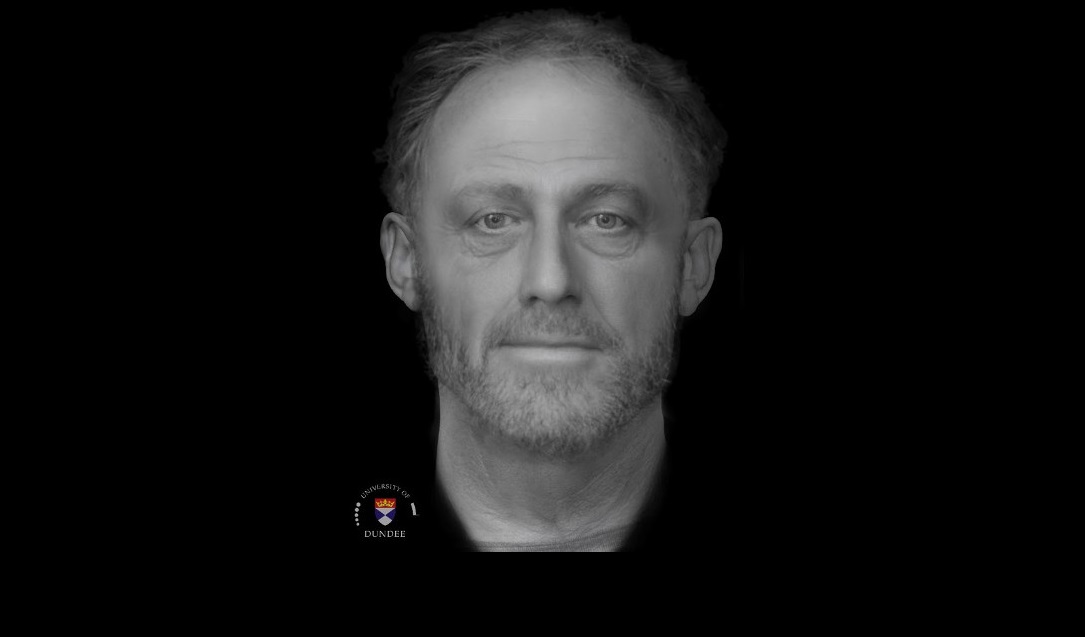
A Common Face
Attendees of the 2017 Cambridge Science Festival met an old neighbor: one who died about 700 years ago. Called Context 958 by researchers, he is a facial reconstruction of a 13th-century man. Along with hundreds of others, he was buried underneath the Old Divinity School building of St. John’s College in a medieval hospital graveyard, and the reconstruction is affording researchers insight into the lives of ordinary poor people in medieval England.
The graveyard, one of the largest of its kind in Britain, was discovered and excavated between 2010 and 2012. The bodies in it were former patients of the Hospital of St John the Evangelist, a charitable hospital that served the poor in Cambridge. Their burials mostly date from the 13th to 15th centuries.
“Context 958 was probably an inmate of the Hospital of St. John, a charitable institution which provided food and a place to live for a dozen or so indigent townspeople — some of whom were probably ill, some of whom were aged or poor and couldn’t live alone,” explained John Robb, professor at the Division of Archaeology at the University of Cambridge in a Cambridge press release.

Robb, his Cambridge team, and Chris Rynn from the Centre for Anatomy and Human Identification at the University of DundeeYou Are Looking at the Face of a Man Who Died 700 Years Ago reconstructed the man’s face and analyzed his teeth and bones in order to assemble the remnants of his biography. Like a telescope into the distant past, these analyses allowed researchers to picture history in a new way and make discoveries about a time long ago.
New Insights
Robb is the principal investigator for the “After the plague: health and history in medieval Cambridge” project, which aims to analyze the St. John’s burials. The researchers are looking not just for statistical results, but for biographical insights as well. This is an entirely new look at the medieval period, since most of what we knew until recently concerned only the rich.
“Most historical records are about well-off people and especially their financial and legal transactions — the less money and property you had, the less likely anybody was to ever write down anything about you,” Robb said in the press release. “So skeletons like this are really our chance to learn about how the ordinary poor lived.”
Thanks to modern techniques, Robb and his team know that Context 958 was over the age of 40 at the time of his death, and that he had the strong build of a laborer. The team guesses that he may have had a specialized trade within the working class based on his diet, which was relatively rich in animal proteins.
Signs of adversity are also written on Context 958’s body. Evidence of a healed blunt-force trauma on the back of his skull and two instances during his youth when his tooth enamel stopped growing suggest he was a stranger to neither violence nor illness and famine.
“The After the Plague project is also about humanizing people in the past, getting beyond the scientific facts to see them as individuals with life stories and experiences,” Robb said in the press release. “This helps us communicate our work to the public, but it also helps us imagine them ourselves as leading complex lives like we do today. That’s why putting all the data together into biographies and giving them faces is so important.”